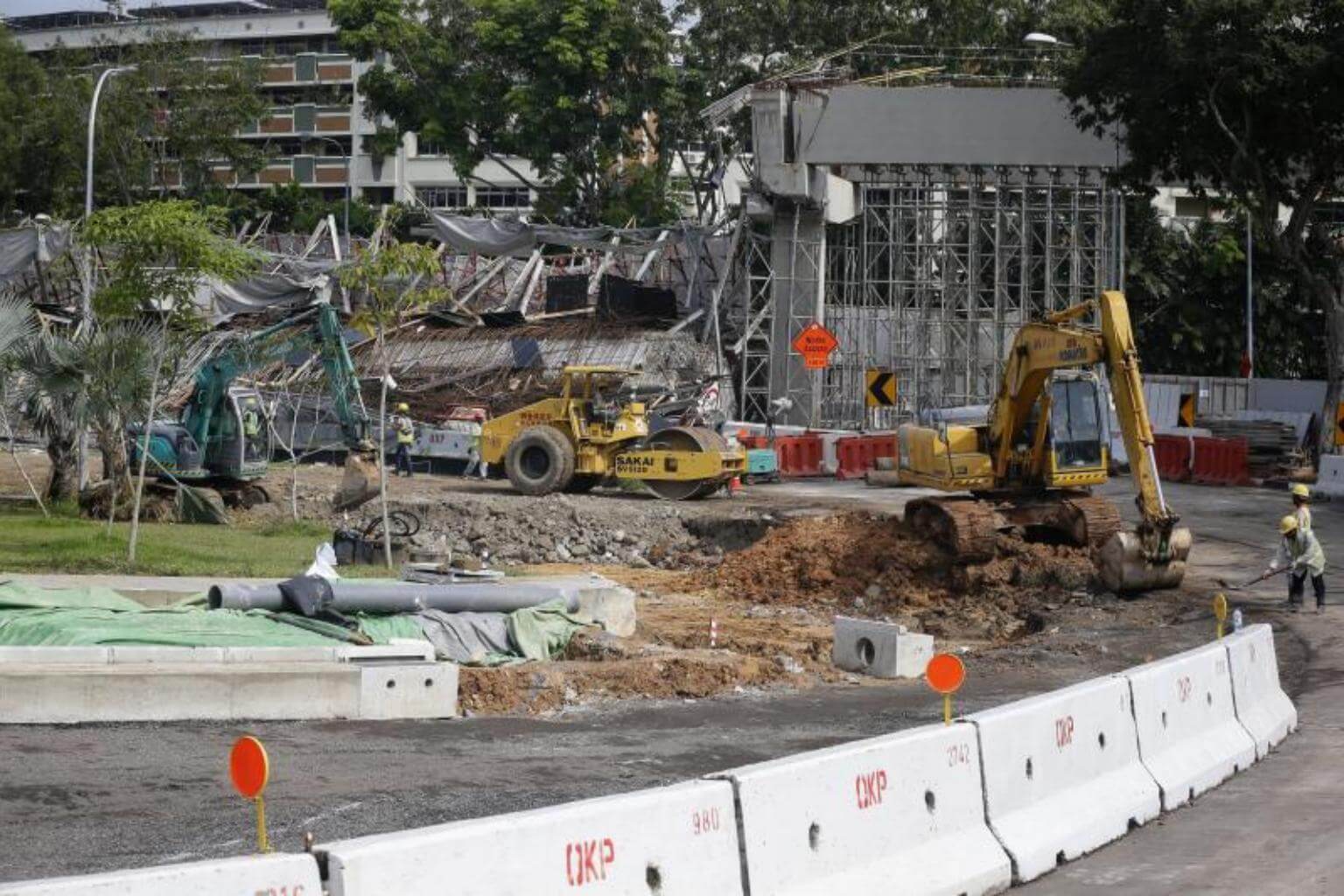Collapsed PIE viaduct designer was also supervisor; experts say such arrangements may pose conflict of interest
Sign up now: Get ST's newsletters delivered to your inbox

Excavation works on July 15, 2017, for a temporary bypass road for traffic heading towards PIE (Changi Airport) from Upper Changi Road East, after a section of a viaduct undergoing construction collapsed the day before.
ST PHOTO: KEVIN LIM
Ng Jun Sen, Zaihan Mohamed Yusof
Follow topic:
SINGAPORE -The consultant who designed the Pan-Island Expressway viaduct that collapsed on July 14 was also the supervisor who checked the construction works, The Straits Times has learnt.
While industry experts say it is neither uncommon nor illegal for the same person to hold two roles, several add that they hope the authorities would review this arrangement as it might pose a conflict of interest.
A spokesman for CPG Consultants, a subcontractor to main employer Or Kim Peow (OKP) Contractors in building the viaduct, told The Straits Times that the qualified person (QP) is Dr Robert Arianto Tjandra.
Said the spokesman: "CPG Consultants, including Dr Tjandra and other key project stakeholders, have been working closely with the Land Transport Authority (LTA) and the relevant authorities to carry out detailed investigations.
"Dr Tjandra is fully assisting with the investigations and is not involved in other projects presently."
In general, design and supervision QPs are responsible for coming up with the building plans and checking that the construction works are carried out as specified. QPs in charge of supervision would also typically direct a team of qualified site supervisors to carry out checks.
The load calculations that the QP makes are typically double-checked by an independent accredited checker (AC). The accredited checker in the Upper Changi Road East worksite is Calibre Consulting Singapore, according to LTA tender documents.
Building and project management experts told ST that it is common for the QP to be in charge of both design and supervision.
But this creates possible conflicts of interest, they said.
Principal consultant of JOH safety consultancy Jason Oh said it is not advisable for a QP to be in charge of supervising his own design especially when the project is complex. "When it is a project that you have done again and again, sometimes one might just switch off his sensors to all the possible hazards," said Mr Oh.
The worry about conflicts of interest has long been a "fundamental issue" in the construction industry, notes Dr Goh Yang Miang of the National University of Singapore's Department of Building.
In the wake of the Nicoll Highway collapse in 2004 - found to be due to critical design errors - rules were changed so that the supervising QP cannot be a partner, officer or employee of the developer and the builder. In the PIE case, the QP is from a subcontractor of the builder - which is allowed.
"No matter whether there are conflicts of interest, engineers still have a moral duty to design and build structures as safely as they can," said Prof Goh.
Project risk management expert Kang Kok Hin, who teaches reliability engineering at universities, said engineers should factor in all foreseeable scenarios leading to critical failure through a process known as failure mode effect analysis.
Said Dr Kang: "All designers and professional engineers must know that any component failure that leads to critical failure must be tested. The stakes are high as lives can be lost."
The viaduct of the collapse two weeks ago killed Chinese worker Chen Yinchuan and injured 10 others. The corbels that had been holding up the horizontal beams had given way, a preliminary investigation found.
Two workers were discharged from Changi General Hospital (CGH) on Thursday (July 27), bringing the number of injured workers warded in CGH to four, including Mr Gao Li Qin who remains in the intensive care unit, said an OKP spokesman.

